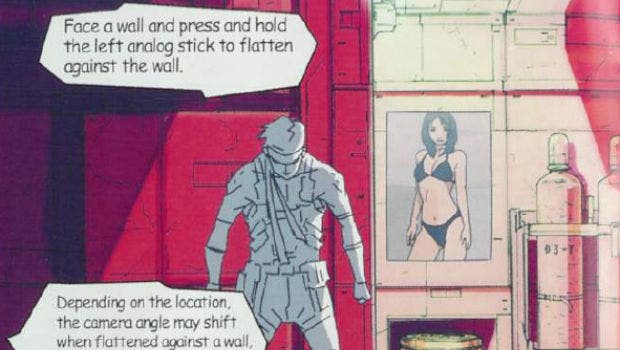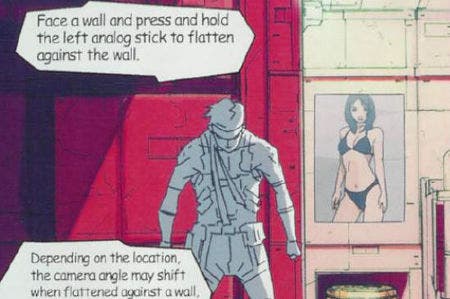Saturday Soapbox: Magical Manuals
Singing the praises of the pamphlets that guide us.
It starts with the smell.
Some thirteen year-olds sit in the quieter corners of train carriages clutching a plastic bag, waiting for a moment away from stranger's eyes when they can catch a sample of what's within: a swig of White Ace, perhaps, or a handful of stolen marker pens that will burn the nostrils then lighten the brain before sending it gently spinning.
Other thirteen year-olds, my younger self included, would cut much the same picture, checking they're truly alone before opening up the bag, prying apart the package within and then taking one big, deep breath.
Proust had his madeleines and we've our manuals. A deep inhalation of a fresh instruction leaflet takes me back to painfully long rides on the Metropolitan line that took me home from Harrow's sticky-floored CEX, the minutes spent waiting on the platform spent memorizing Rainbow Mika's move-set in Street Fighter Alpha 3, the time on the train spent studying every mechanic that the manual would detail. Even before the game had found its way to a console I was an expert.

It is, as is so often the case, about the anticipation - within a manual you have the programme notes, the cast list and, at times, an abstract trailer. Before tutorials became so prolific and so cloying they were part of the game itself, laying the foundation for the adventure ahead. They do more than inform, though - at their best they enlighten and entertain.
If it weren't for manuals, it's not just that I wouldn't be able to remember which button's go, which one's stop and which one swings a chain around my head in Road Rash - without them I wouldn't have known that Slater, the poor chap whose skin is now stretched out across a couple of kilometres of Redwood Forest road, was once a skate rat that got bored of doing damage at 20 mph, or that he's an 'unpredictable dude'. Sorry dude!
I wouldn't have known that my passenger Clarissa in OutRun 2 boasts a 'pleasant sexiness', nor that my other partner Jennifer's a super-rich young lady who gifted me the Ferrari that I'm all too happy to hurl at the scenery. More importantly, without a manual I would have had no idea that Sabu the Street Urchin, the arch enemy in the Dreamcast iteration of Treasure's Bangai-O, dreams of his own office at some point in the future but can never resist the waffles of the goldfish game salesmen. Wait, what?
That's the thing with game manuals; they can often tell you a little about the game itself, if not the company that made them. The Dreamcast's Bangai-O - and for what it's worth, I think the surreal humour and gentler difficulty make this the definitive version of the eccentric shooter - is a perfect case in point. Half the manual is a functional journey through your mech's controls, the dry descriptions doing little to suggest the insane fireworks that Treasure conjures through Bangai-O's cascade of levels.

The other half, though, gets closer to the dumb, smart heart of Treasure - a list of character biographies that are touched with the magical insanity of the developer behind the likes of Gunstar Heroes and Ikaruga. I've thrown a few to the side of the page as paraphrasing them fails to show the bigger, brilliant picture, but I can't fail to mention other characters such as Montgomery, a sheep with a love for pulp fiction, as well as a team of apathetic, useless bosses.
Metal Gear Solid's comic-book inserts have always boasted a typically stylish, self-referential touch that was perfectly woven into Snake's wider world. They're also full of brilliant eccentricities - and I love that the exhaustive timeline that's laid out for Snake Eater strings together the splitting of the atom and the Cuban Missile Crisis while taking time to acknowledge the cinematic release of Dr. No and Thunderball and pausing to note the birth-date of composer Harry Gregson-Williams.
Rockstar, meanwhile, continues to create some of the better examples; the virtual tourism of open world games such as Grand Theft Auto complemented by virtual guide books written in character and reporting from within the world itself - a little part of Liberty City physically manifesting in your hands.
And when Rare was handed the keys to Donkey Kong, the tone was set before the game had even started, with Kranky Kong's chip-chip-chipping away at the fourth wall letting you know that the Britsoft developer's sense of humour would play as much a part in this reboot as chimps and barrels.
It's probably no surprise that Nintendo's manuals have so often been the very best, its designs as elegant in paper and ink as they are in the outfit's virtual worlds. There's an interesting story, too, that's told in the progression of the ephemera that's found itself inside Nintendo boxes.

The Legend of Zelda's artful simplicity was reflected in 1985 by a manual that mirrored the gentle breeze of Link's in-game adventure - a series of bright bold panels that brought to life the place that was conjured when the pixel-art collided with your imagination.
Mario games have long had their instructions laid out in wonderful sets of pre-school hieroglyphics, though the creeping complexities of recent years have seen a more formulaic approach slowly take over. There've been some curious detours, though: witness the plumber's DS debut, the slightly wrong-headed portable port of Mario 64, and its manual that has the pages rotated 90 degrees forcing you to scan two at a time, aggressively reinforcing the idea of the dual screen at a time when everyone still thought it was an act of madness.
Years later and Nintendo's now largely happy to let the magic happen exclusively in-game, though its manuals remain colourful and exquisitely designed. Super Mario Galaxy's manual is peppered with notes from Peach and glorious spreads from the Mushroom Kingdom, while the buttons for Skyward Sword are laid out upon yellowed parchment like a scroll that's been handed from one generation to another.
The magic's still there, even if it's not quite as spectacular as it once was. But there's one thing to take solace in: they still smell great.

